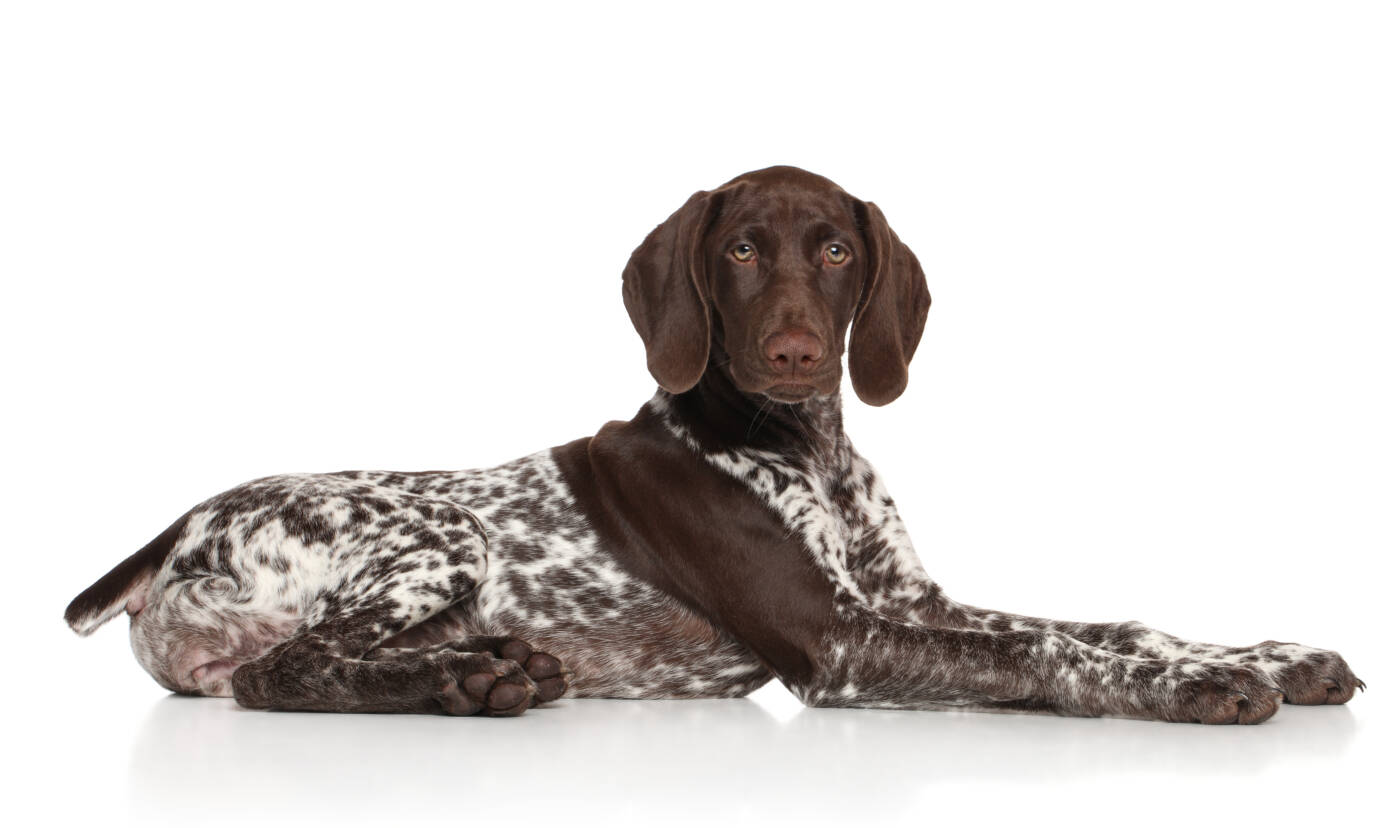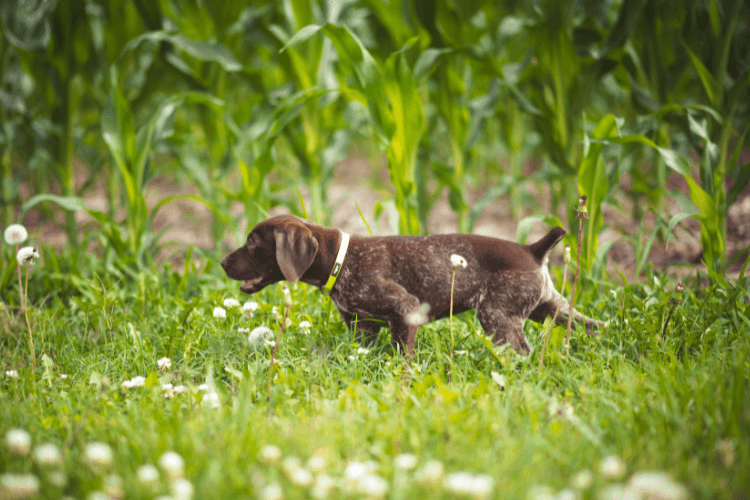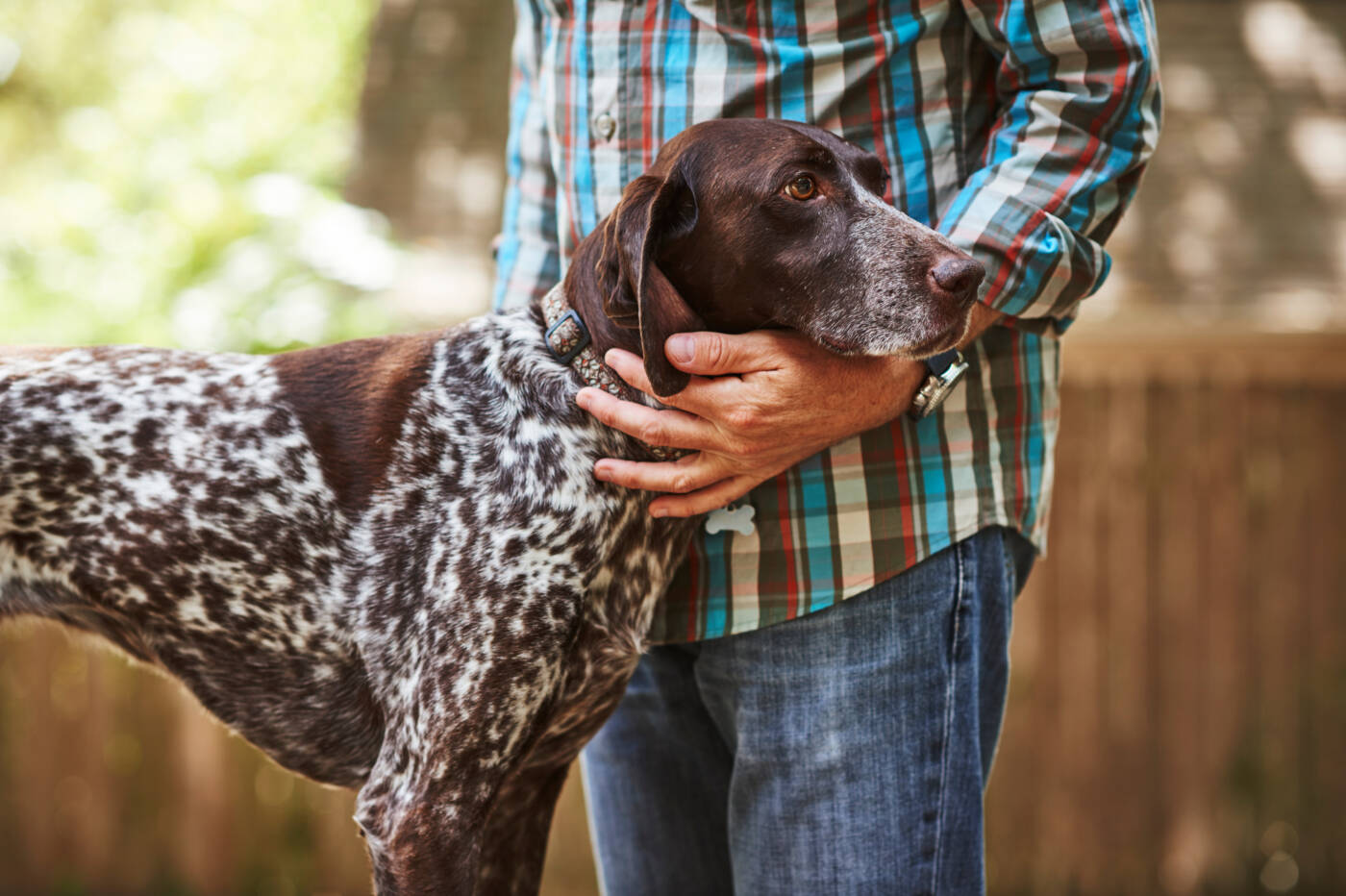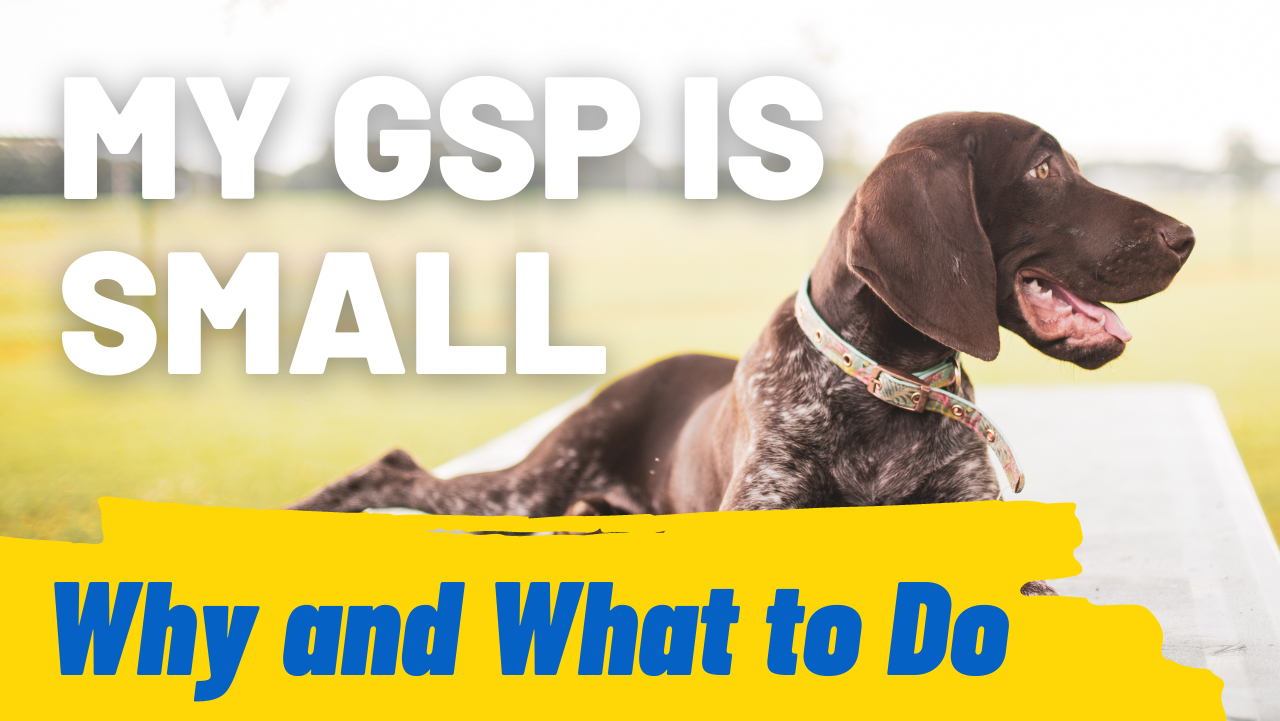There are some reasons your GSP may look small. German Shorthaired Pointers are slender by nature and sometimes this can cause owners to question their GSP’s size and weight. In most cases your dog is just fine, but let’s look more into this topic to determine if your GSP is underweight, skinny, or just small.

Is My GSP Too Skinny?
In most cases, the answer to that question is no. As long as you’re properly feeding your GSP their daily requirements, you shouldn’t be concerned about them being too skinny.
For a more in depth look at what and how much to feed your GSP, read our post, GSP Food & How Much to Feed Your Pointer
GSP’s naturally have a lean appearance and this may give the illusion that they’re underweight.
If your GSP is active, not lethargic, and you’re not seeing bones and ribs, they are most likely normal.
The quickest way to test if your GSP is underweight is to feel their ribs. They should feel like the bones on the back of your hand when you hold it into a fist. They shouldn’t feel like your knuckles.
Here’s a quick table to give you an idea of how much your GSP should weigh at different ages:
| Age | Male GSP | Female GSP |
|---|---|---|
| 3 months | 18–25 lbs | 17–23 lbs |
| 6 months | 38–48 lbs | 32–40 lbs |
| 9 months | 48–61 lbs | 39–52 lbs |
| 12 months | 48–61 lbs | 41–57 lbs |
| Adulthood | 55–70 lbs | 44–60 lbs |
Why Is My GSP Small?
Now that we know the average weights of GSP’s, it’s time to talk about size.
According to the American Kennel Club, GSP’s are medium-sized dogs that reach up to 25 inches in height. Yet, it’s not uncommon to see smaller versions. Why is that? Here are some reasons:
Selective Breeding
When we say selective breeding, we’re not talking about cross-breeding with any other species, we’re talking about selecting parent dogs of a certain size, which have higher chances of giving birth to puppies with similar characteristics.
It may not even be intentionally breeding to get a smaller dog outcome. Sometimes if both parents of your GSP are shorter/smaller than average, expect your puppy to have a similar size than the standard breed size.
Diet Considerations
Your GSP’s diet goes a long way in forming their overall appearance. While diet won’t control the height of your GSP (since the puppy will reach the maximum size eventually) it’ll still affect their weight.
Some owners even fall into the mistake of overfeeding their dogs, so we’ll rule that one out. The second scenario, though, is where you should be concerned.
If your GSP is refusing to eat, or eating but not putting on weight, then they could have an underlying medical problem.
Take your dog to the vet and have them checked if you have concerns about this.
Dwarfism
Many people are unaware that dwarfism can affect animals just like it can affect humans. If your GSP has dwarfism, not only will they be smaller in size, they might have one or more of the following symptoms:
- The joints could be enlarged or bowed
- The nose/snout could be shorter than usual
- The head could be bigger than usual
- Teeth could be crooked
Are you interested in reading our post, When Will My GSP Start Pointing: (Answered)
What Age Are GSP’s Fully Grown?
German Shorthaired Pointers reach their full size between 1.5–2 years of age. After the 2-year mark, don’t expect your dog to get any taller.
At this point, if your dog is still smaller than usual, they will likely remain so. However, we recommend that you take them to your vet for a checkup, as they may have an underlying health issue.
What to Do if Your GSP Is Underweight

Here’s what you can do to allow your GSP to gain some weight:
1. Change Your Food Brand
Many food brands exist to suit the tastes of all dogs. The brand that used to work perfectly with one of your dogs may not just suit your GSP.
Consider changing the brand if your dog isn’t eating enough of it, or if you don’t think the quality is high enough.
2. Increase Your Dog’s Rations
The brand might be good and your dog may be liking it, but you might be mistakenly giving your GSP less food than you should be.
It would be wise to consult your vet about how much food should you be giving your GSP during different growth stages.
You should also not increase their daily intake if they are growing and aren’t underweight.
Please refer to this post to better determine daily food intake: Dog Feeding Calculator: Dog and Puppy Feeding Guide (All Breeds)
3. Fewer Treats, More Healthy Food
Treats don’t hold much nutritional value, and they’re often used as encouragement to help you train or reward the dog.
Those treats can be tasty, but you shouldn’t use them as your main source of food for your dog. Instead, provide your GSP with high-quality food to ensure healthy growth.
4. Use Supplements
Supplements come in many forms for your dogs, like chews, liquids, and powders. Just like your workout supplement, a dog’s supplement aims to ‘complement’ his diet.
If, for whatever reason, the food your dog is currently eating isn’t helping him gain weight, high-quality supplements should fill in the gaps.
5. Slightly Reduce Playtime
GSP’s are running machines, and they need at least 90 minutes of exercise every single day to remain healthy.
If you shoot beyond those 90 minutes, your GSP will keep up and enjoy the process as well, but it could cause muscle catabolism.
It’s a process where the body would break down some of the muscle tissue to provide enough energy for vigorous training.
If your GSP exercises for more than 90 minutes a day, then you may be overtraining your dog.
6. Rule Out Any Medical Problem
If you’ve checked all of the previous boxes, but your GSP is still not at the weight level he should be, he could be sick.
A visit to the vet should be enough to find and get rid of whatever problem is there.
7. Allow Your GSP to Sleep Enough

Did you know that gym players who don’t get enough sleep overnight will struggle to gain muscle weight? A dog that’s as active as a GSP will be in the same scenario.
Allow your dog to rest and have undisturbed sleep overnight to help him gain the right amount of weight.
FAQs
Are GSPs supposed to be skinny?
German Shorthaired Pointers fall in the “lean” category, not skinny. Their bodies are slender and their muscles are long and not bulky.
However, if your GSP is skinny, and the spine is prominently showing on his back, then your dog is underweight.
How much should I feed my GSP?
While different brands have different portions, a good rule of thumb is to split 3% of your GSP’s body weight between two meals every day.
For example, if your dog is 60 pounds, he should eat 1.8 pounds of food every day.




